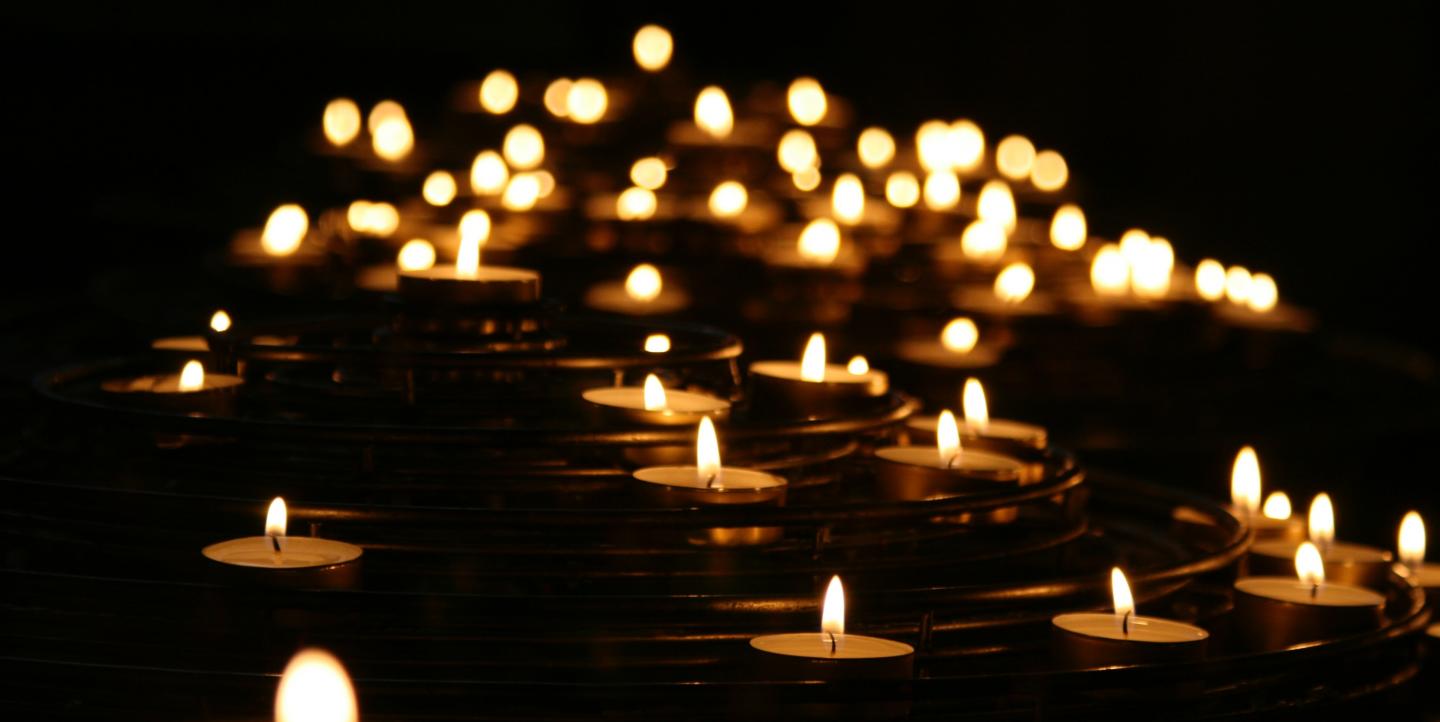This article is part of our online coverage of reporting on COVID-19. To see more resources, click here.
More than 120,000 people around the world have died of COVID-19 as of the writing of this piece. Journalists aren’t just working overtime to keep up with the pace of new information, regulations and implications of the myriad effects of the pandemic — they are grappling with how to document the losses many communities are grieving.
Today, goodbyes are said at a distance and memorials are deferred. “There remains only the possibility of greetings through words,” said Giusi Fasano, a reporter at one of Italy’s national newspapers, Corriere della Serra. “Words have become fundamental in this story.”
Many of the most significant words commemorating the lives of those lost to the virus are found in obituaries, a form of newspaper reporting and writing as old as the profession itself, and more necessary than ever now in the midst of the pandemic.
[Read more: Brazilian favela journalists lead actions to raise awareness about COVID-19]
In a moment of mourning that Italy has witnessed, and that other countries are also confronting, it has fallen to journalists to document the loss. In a piece from March 21 by Fasano and Donatella Tiraboschi, both reporters at Corriere della Serra, the journalists wrote about the power of the written word at this time:
"The virus takes away the breath and humanity of a final goodbye to the loved ones. And so words become powerful, even the posthumous ones. They become embraces, kisses, and caresses denied to those who leave this world breathing their last days in a COVID ward. Words are the only possible goodbye.”
Fasano is based in Milan, capital of the Lombardy region, which has been the epicenter of the pandemic in Italy. For her, amid the tragedy’s overwhelming statistics, the staggering human costs of the pandemic are already all too evident.
“We have seen the marks left on the faces of the nurses and doctors, their tiredness and their tears. There is not anything to add to any of this,” she said.
Fasano said she has had to interview many people who cry as they speak of the loved ones they have lost to the disease, and were unable to say goodbye to in person. Healthcare professionals have told her how the hospital echoes at night from the rings of the mobile phones of COVID-19 patients who have passed away or who are in intensive care, their valuable possessions safeguarded and quarantined in a safe usually reserved for morphine.
The tragedy is affecting everyone, and the consequences are all around. “All the rituals of death disappeared,” Fasano said. “Our dead are taken away from the cities with military trucks. They are cremated in other cities.”
[Read more: How to report on climate change during a pandemic]
L’Eco di Bergamo, the newspaper serving the province of Bergamo in the heart of the Lombardy region, has gone from publishing one page of obituaries in early February to publishing 10 pages of obituaries in its daily print edition in mid-March, as shown in a now-viral video first posted by Giovanni Locatelli to Facebook. Though the cause of death is not listed for each of the obituaries, the editor of L’Eco di Bergamo estimated that around 90 percent of the deaths recorded in the paper were COVID-related, according to The Washington Post.
In Italy’s national news, too, Corriere della Serra has published more and more obituaries every day, Fasano said. Reporters will write about someone’s life after a family member has called in reporting the death of their loved one.
In the U.S., New York City has been the country’s hardest hit area. The city's death toll has risen to over 10,000, as new data now includes probable COVID-19 deaths at home and the hospital.
In late March, The New York Times dedicated a section of the paper’s obituaries to commemorate the lives of New Yorkers and others throughout the world who have died of COVID-19. Entitled “Those We’ve Lost,” the vertical includes a link inviting readers to submit stories of loved ones who have died. In addition to New Yorkers who have died from the virus, reporters have also written about well-known national and international figures who have passed away of complications from the disease caused by the novel coronavirus.
Not as defined by a specific geographic location or community — though it has offices in New York City — the internationally read Buzzfeed News has also started a section to honor the lives of the victims of COVID-19. Their obituaries include residents of New York City and the surrounding Mid-Atlantic region, as well as people from states throughout the U.S. and countries around the world. Like The New York Times, Buzzfeed is asking its readers to reach out via email with the stories of loved ones lost to the virus whom they would like to have remembered.
Journalists at the digital magazine La Barra Espaciadora in Ecuador began a similar initiative on April 1. They launched a section on their site, “Memorias vivas,” dedicated to writing about the “living memories” of those who have passed away due to complications of COVID-19.
Ecuador has the highest number of COVID-19 cases per capita of any country in Latin America, and in some cities, such as Guayaquil, the rate of infection and death from COVID-19 has caused the healthcare system to collapse. This has led to the bodies of some victims being left in the streets.
According to the editors, as of April 15, they’ve published 73 obituaries. Nearly 600 names await journalists’ attention in their online registry. “One heartbreaking thing about the moment we live in is that our loved ones cannot receive the collective tribute they deserve,” said journalist Alina Manrique of La Barra Espaciadora in a press release. “This project tries to somehow repair that impossibility. Because all the lost lives are important.”
Whether it’s in legacy media organizations with millions of followers, or in local community media, journalists are tasked right now with remembering the victims of COVID-19, and some reporters might be writing obituaries for the first time. Fasano said her advice to journalists who have covered the losses felt by communities, or who will in the coming weeks and months, is simple — and similar to how they should approach most interviews.
Her main guidelines:
-
“Always be empathetic and attentive to the human part of the story,” Fasano said. She recommends that when you interview someone, you should be considerate and understanding.
-
Be aware how far you can go with your questions, or requests for memories. Be respectful of the boundaries of those you interview.
-
Understand that not everyone will want to speak with the media or have their loved one be listed or written about publicly.
For more resources on how to approach writing an obituary, the Poynter Institute for Journalism has a valuable list of guidelines on their website.
Main image CC-licensed by Unsplash via Mike Labrum.
This article has been updated to include details surrounding the “Memorias vivas” section of the digital magazine, La Barra Espaciadora.


